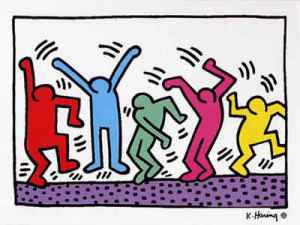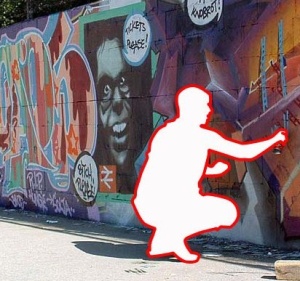 Are you a clever girl or a wise woman? A hero or a trickster? There’s more to you than meets the eye, but you have a certain personality. And this persona tends to be a self-fulfilling prophecy. Your self-image affects how you feel. Your feelings influence the way you act. And your actions ensure that you get the experiences you expect. In other words, your character affects what happens in your life story.
Are you a clever girl or a wise woman? A hero or a trickster? There’s more to you than meets the eye, but you have a certain personality. And this persona tends to be a self-fulfilling prophecy. Your self-image affects how you feel. Your feelings influence the way you act. And your actions ensure that you get the experiences you expect. In other words, your character affects what happens in your life story.
All the world’s a stage and you act a central character. You choose your part and find people to play with you. At the same time, your image determines what role you play in their story. You relate to people whose life scripts fit with yours. All our stories draw on a common set of characters. The same figures recur in tales from different times and places: the princess, the good mother, the wise man and so on. We recognize such roles easily when we encounter them. The psychologist Carl Jung called these universally recurring figures ‘archetypes’.
Archetypes are outline forms which appear in the human psyche. They consist of clusters of stereotypical attributes. We fill in their features on the basis of personal experience. Your image of a ‘good mother’ draws on your own encounters with mothering. You fear the witch because of folktales you once heard. These figures are familiar and reassuringly predictable. They help us to make sense of the world.
 When you interact with other people, you are usually playing one of these archetypal roles. You pick a part and act it out with your own personal interpretation. This character is your public image. It determines how other people see you, and how you see yourself. You have relationships with people who will act complementary roles. The hero needs a princess to rescue; the good mother wants a hungry urchin to feed.
When you interact with other people, you are usually playing one of these archetypal roles. You pick a part and act it out with your own personal interpretation. This character is your public image. It determines how other people see you, and how you see yourself. You have relationships with people who will act complementary roles. The hero needs a princess to rescue; the good mother wants a hungry urchin to feed.
The character you choose is influenced by the people around you. Social and economic factors limit the parts you can play: Beauty may be financially dependent on her Beast. But ultimately the only limiting factor is your imagination. When you change, so do your relationships with other people. Beauty can get a job and take control of her own life.
 The writing’s on the wall but who composed it? You did: but usually you’ve used automatic writing. Most of us drift through life without realizing what’s going on. We accept the hand that fate has dealt us, without ever trying to change our cards. We fall into friendships out of convenience rather than choice. We stay in jobs that don’t really inspire us because we can’t see any alternative. Our lovers may take us for granted, or even abuse us: we act as if there’s nothing we can do about it.
The writing’s on the wall but who composed it? You did: but usually you’ve used automatic writing. Most of us drift through life without realizing what’s going on. We accept the hand that fate has dealt us, without ever trying to change our cards. We fall into friendships out of convenience rather than choice. We stay in jobs that don’t really inspire us because we can’t see any alternative. Our lovers may take us for granted, or even abuse us: we act as if there’s nothing we can do about it.
Actually you have more control over your story than you think. You can broadly choose what happens in your life. Will you go to college or get a job? Do you want to stay single or get married? You may have to modify the details but you decide what you want to do. If you don’t make conscious choices, you’re actually deciding by default. What matters is to become aware of this process.
 The greatest story ever told is happening right now, all around you. Your personal role is unique, but we’re all on the same great journey. Your life script interlocks with the stories of everyone you know. You choose the part you want to play, and you decide what to do. Once you are aware of this, you can start to take control of your life. Now there’s an empowering thought. Your story so far tells who you were: what happens next is up to you!
The greatest story ever told is happening right now, all around you. Your personal role is unique, but we’re all on the same great journey. Your life script interlocks with the stories of everyone you know. You choose the part you want to play, and you decide what to do. Once you are aware of this, you can start to take control of your life. Now there’s an empowering thought. Your story so far tells who you were: what happens next is up to you!
This post is based on an article in Watkins Magazine Issue 33 Spring 2013.
‘LifeWorks‘ shows how you use archetypal figures in your life story. Visit my Author Page and follow me on Twitter @janebaileybain. If you like this post, leave a comment and use the buttons below to Share on Twitter, Facebook and Stumbleupon.
